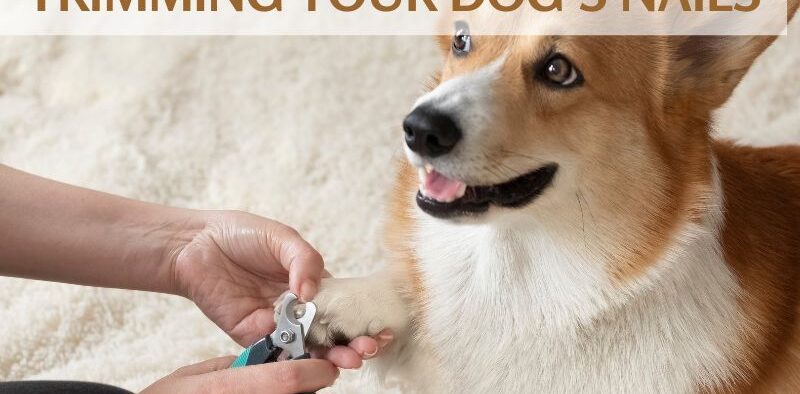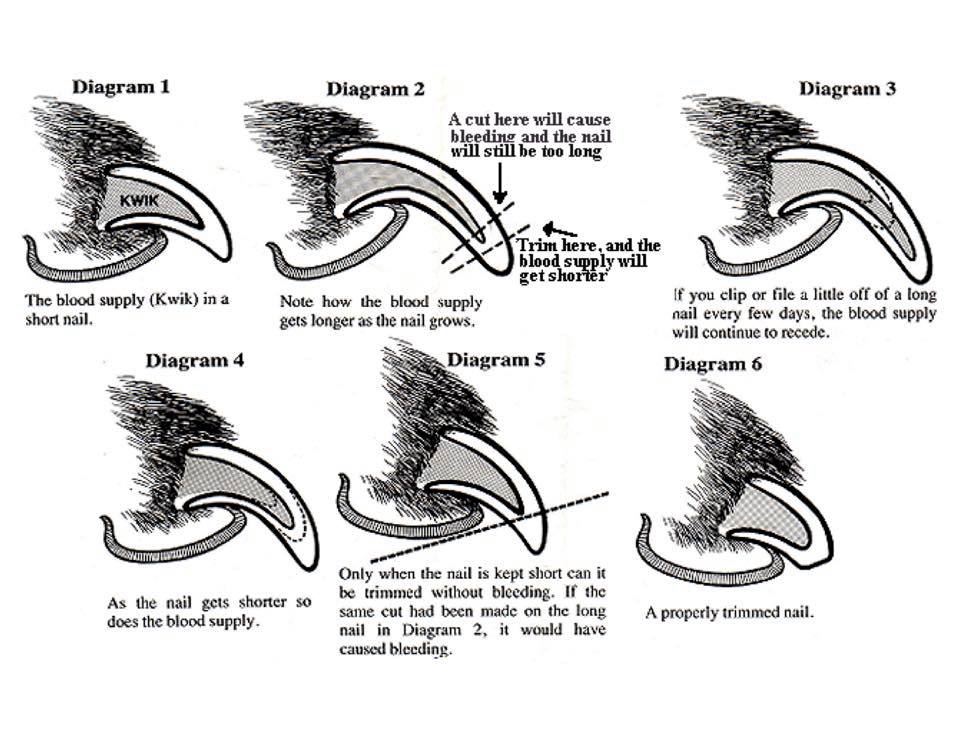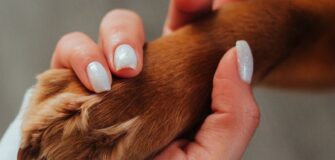The Ultimate Guide to Trim Your Dog’s Nails at Home
Share

Just about every pet lover worries about trimming their dog’s nails at home. It’s often stressful to you, unfamiliar to them and we are always a bit concerned about our pets feeling pain. But, keeping your dog’s nails in tip-top shape is an essential part of their overall well-being. While a trip to the groomer is often the simplest solution, learning to trim your dog’s nails at home can be a rewarding and stress-free experience for both you and your pet.
In this comprehensive guide, we’ll explore the best ways to trim your dog’s nails at home, including training tips, the latest nail trimmer technology, and crucial safety information.
Step 1: Train Your Dog to Enjoy the Process of Nail Trims
Before you embark on your dog’s nail-trimming journey, it’s crucial to train your dog to associate the process with positive experiences. Since nail trims often need to be done monthly, it can get expensive to have a professional do it. Follow these steps to make nail trimming a breeze:
Touch Sensitivity Training
Spend time each day touching your dog’s paws and nails regularly, getting them used to the sensation. You can do this by teaching them to offer you their paw (shaking) and follow up with a treat. This will help desensitize them to the nail-trimming process. This is also a great time identify their quick.
What is the Quick?
The “quick” is a soft cuticle that contains the blood vessel and nerves that run through your dog’s nail. Mainly located above the nail curve, this vascular structure provides nourishment to your dog’s nails, which allows them to grow and feel certain sensations. Your dog’s nails are very sensitive and in order to shorten the nail, you must first encourage the quick to retreat. You never want to accidentally cut the quick.
Positive Reinforcement
Reward your dog with treats and praise during and after each successful paw sensitivity session. This will help create a positive association and reduce anxiety.
Start Slowly
Introduce your dog to the nail trimming tools gradually. Let them sniff and explore the clippers or grinder in a relaxed environment. This should be done over days and weeks, not just a few minutes before the session. Remember, it takes time to alleviate fear!
Step 2: Safety (and Understanding) First!
Ensuring the safety of your pet during the nail trimming process is paramount. But, so is understanding the dog’s nails. This diagram will help!

Before trimming your dog’s paws at home, follow these safety guidelines:
- Proper Technique: Understand the anatomy of your dog’s nails to avoid cutting the quick. Light-colored nails make it easier to spot the quick, while dark-colored nails may require extra caution.
- Take Breaks: If your dog becomes anxious or agitated, take breaks during the session to avoid stress. Gradually increase the trimming time as your dog becomes more comfortable. remember, some of these items can create a lot of heat resulting in burns. Be sure you know how to use the grooming tools you select before subjecting your dog to them.
- Styptic Powder: Have styptic powder on hand to stop bleeding in case you accidentally cut the quick. Apply it immediately to the affected nail. We always recommend a commercial brand, which is generally a combination of Ferric Subsulfate, Aluminum Chloride, Diatomite, Bentonite, Copper Sulfate, Ammonium Chloride, Benzocaine. However, we do have some natural alternatives that you can make at home if you can’t access styptic powder right away.
- Professional Advice: Never be ashamed to seek professional assistance if you’re uncomfortable trimming your dog’s nails. It’s not worth stressing your dog (or yourself) out. Dogs nails are very sensitive and it can be very traumatic should you accidentally quik their nail.
Step 3: Choose the Best Nail Trimming Tools to Trim Your Dog’s Nails at Home
Choosing the right tools can make a significant difference in the success of your at-home nail trimming sessions. Not only do you need to choose the correct technology, but also the correct size for your pets.
These are just a few of the newest products available for triming your dog’s nails at home:
Traditional Clippers
Guillotine-style clippers are a classic choice. These clippers are generally best for medium and large dogs. They are also very quiet, so there is no noise to stress sensitive dogs. Ensure they are sharp, clean and designed for your dog’s nail size.
Scissor-type Clippers: Ideal for smaller dogs, these clippers resemble scissors and provide control over the amount of nail being trimmed.
Nail Scissors: Similar to regular scissors, but these are designed specifically for your pet’s nails. Thhese can provide precise control and are especially useful for smaller dogs and for shaping the nails after initial trimming.
Dremels and Grinders
Grinders or Dremels: Nail grinders use a rotating abrasive surface to gradually trim the nail. They offer precision and are less likely to cause splintering. When selecting, try to choose one that offers a charge rather than a cord. This will help reduce confusion and the cord will not startle you or your pet. The quieter the dremel, the better!
Pawdicure Pens: Battery-powered nail filers specifically designed for pets, offering a gentle and stress-free alternative.
Rotary Tools: Speciality dremel-like rotary tools with sanding attachments can be used to grind down your dog’s nails. They offer precision and are less likely to cause splintering. Ensure that the tool has a low noise level to avoid frightening your dog.
Files and Scratch Boards
Pet Nail File: If your dog has relatively soft nails, using a high-quality pet nail file can be an effective and gentle way to maintain their nail length. It’s a gradual process and may require patience.
Emery Boards: Emery boards, similar to those used for human nails, can be an alternative for smaller dogs or for shaping after trimming. They are gentle and can be a good option for dogs with sensitive nails.
Scratch Boards: In recent years, scratch boards have gained popularity as an effective and less stressful alternative for trimming a dog’s nails. These specialized tools offer unique benefits that can enhance the nail-trimming experience. Remember, that there are few things you need to do to train your dog to use this equipment.
Professional Nail Trims
Luckily, you can also hire a professional to trim your dog’s nails at home. This is a great option if you feel like it would stress you or your dog out. This is also helpful if your dog has very black nails, making it a little more difficult to find the quik. Many professionals offer discounts for multiple pets.
Professional Grooming Services: If you find at-home nail trimming challenging or your dog is resistant, seeking the services of a professional groomer is always an option. Groomers are experienced in handling different breeds and temperaments, ensuring a safe and efficient nail-trimming experience. Look for professionals who offer home grooming services if you live in a remote area or have multiple dogs.
Veterinary Assistance: In some cases, especially if your dog has extremely thick, dark or long nails, your veterinarian may offer nail trimming services. They can also provide guidance on the best methods for your specific dog’s needs.
Trim your dog’s nails at home and strengthen the bond between you and your pet. By incorporating positive reinforcement, choosing the right tools, and prioritizing safety, you can make the nail-trimming experience a positive one for both you and your furry friend. Don’t forget to add a few other luxury grooming products into your pet’s regular grooming routine! Just as your skin, hair and nails need special care, so do your pets!










